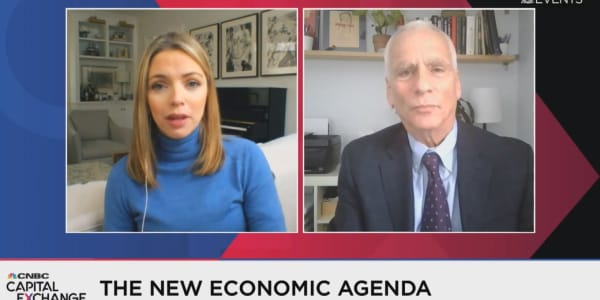The latest read on April housing starts showed improvement over March but still a slower building pace than a year ago, though demand for housing soars and the nation struggles with a deficit of affordable homes for sale. So why aren't builders rushing to put shovels in the ground?
Speaking at CNBC's Capital Exchange event in Washington, D.C., Sheryl Palmer, the CEO of Arizona-based Taylor Morrison Homes (NYSE: TMHC) put it bluntly:
"The fourth quarter [of 2018] was probably, holistically, the worst quarter we've had as an industry since the downturn, and we ended the year with a tremendous amount of inventory," she said. "In December, if you were to talk to anybody, there was, potentially, a house was never going to be sold in the U.S. again. It was that bad."
After a robust first half of 2018, consumers were hit with higher mortgage rates, a government shutdown and uncertainty in the stock market, leading them to wonder if it was the right time for such a huge investment. Demand fell suddenly, and builders were stuck holding the bag.
Now buyers are coming back, and in fact sales were very strong in April, according to several big production builders. Homebuilder sentiment is now rising, and while housing starts rose month over month in April, they were still not as strong as last year and still well below historically normal levels of production.
"People came into the year with a lot of inventory, because the fourth quarter stopped," said Palmer. "You can't just pick up that machine and say, 'Okay, it's time again, I need new starts.'"
The reasons for that are manifold: High costs for land, labor and materials, and increasingly onerous regulation. The cost of regulation is now about one-quarter of the cost to build the average home. The issues are the same in multifamily construction.
"No one can figure out how to build more affordable without some type of change in either the regulatory structure or some form of additional subsidy," said David Brickman, incoming CEO of Freddie Mac, speaking at the Capital Exchange conference. "It is just fundamental economics of building. It is very difficult between land costs, building costs, availability, regulations, it's difficult to get entitled land where people want to live. So cost of building a single apartment unit exceeds what you can rent it out for."
Brickman said the U.S. does not have enough housing in aggregate.
"We think we need about 1.5 million new homes; we are barely at 1.2 million. We've been running at that level or lower for a number of years, so we've got a deficit of 4 million houses that we really should have to house the entire population," he said. "So that drives rents up, drives prices up and creates some of the tensions we see in terms of lack of supply."
During the last housing boom, builders were mitigating costs by developing land further out from major metropolitan cities. The so-called exurbs allowed them to build a larger volume of more affordable homes, but today's homebuyers are not like previous generations.
"The consumer dynamic has changed," said Palmer. "The whole 'drive 'til you can buy' isn't nearly as attractive as it was many, many years ago when we look at this millennial population, and it's about a third of our business. They're choosing to wait until they can buy what they want. They don't want that hour commute."
Limited land in urban areas means more competition and therefore higher prices. Mortgage rates this week fell to the lowest level in a year, but it is not enough to offset sky-high prices in some markets.
"Rates moving down continues to fuel increased house prices. Great if you're a homeowner. It's a problem if you're not a homeowner," said Brickman.
Join CNBC at our upcoming Capital Exchange summits in Washington, D.C., for more candid conversation featuring business and government leaders exploring how they can work together to spur growth.






